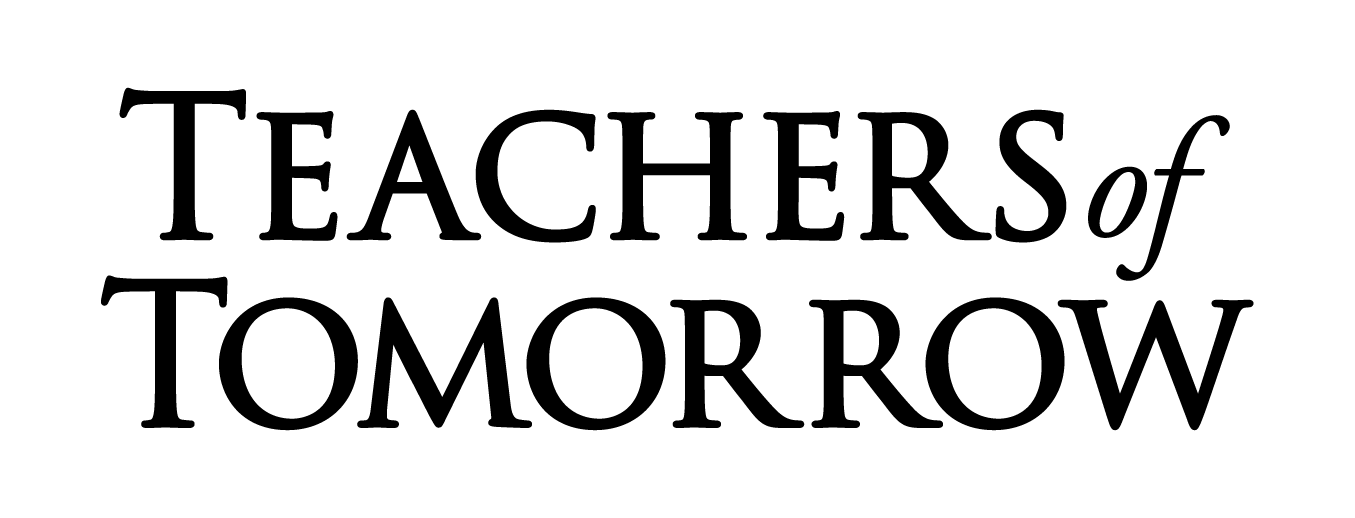We all have that one teacher who made a lasting impact on our lives. The one who believed in us inspired us, and encouraged us to reach for the stars.
Teachers have a unique ability to shape our lives in profound ways, not just during our school years, but even long after we have completed our education and embarked on our professional journeys.
Some teachers have been so inspiring that their students follow in their footsteps and become educators themselves.
If you are considering a career as a teacher, you may have questions about the path ahead. For example, how long does it take to become a teacher? What steps do you need to take?
In this guide, we answer those questions and provide you with all the essential information to help you on your teaching career journey.

How to Become a Teacher
Before you become a teacher, there are some steps you must follow. We’re going to cover each step next to give you a clear picture of the entire process.
1. Decide the area you want to study.
When deciding on the area you want to study as a prospective teacher, it’s essential to explore the available options and determine what you’re truly passionate about.
Choosing an area you’re passionate about will keep you committed to the process and you’ll enjoy doing your job ultimately.
There are different areas and education levels you can consider. For example:
- Early childhood education: This area focuses on teaching children from birth to around eight years old. You’ll end up teaching preschool and kindergarten.
- Elementary education: You’ll get to teach multiple subjects such as math, science, language arts, and social studies, in grades one through six.
- Middle school: Middle school educators teach grades six to eight. You can teach specific subjects which you’re passionate about.
- High School: You’ll be able to teach grades nine to twelve and specialize in a specific subject area such as mathematics, science, English, social studies, or foreign languages.
When choosing which level you want to teach, consider your interests, strengths, and values so that you can make a positive impact on students’ lives and find fulfillment in your teaching career.
2. Start the bachelor’s degree program.
Once you’ve chosen your area of interest, you should enroll in a bachelor’s degree program. Starting a bachelor’s degree program is essential because most teaching jobs require at least a bachelor’s degree.
The bachelor’s degree provides you with the knowledge necessary to succeed as an educator.
A bachelor’s degree program in education commonly consists of the following key learnings.
- Foundation: These courses cover topics such as the history and philosophy of education, educational psychology, and theories of learning. These introduce you and help you understand the purpose and principles of education.
- Pedagogy and instructional strategies: Here you learn effective teaching methods, lesson planning, curriculum design, and technology in education.
- Subject-specific content: If you choose to specialize in a particular subject area, such as mathematics, English, science, or social studies, you’ll delve deeper into the content knowledge of that subject.
- Classroom management: Most bachelor’s degree programs in education often include coursework on classroom management techniques, strategies for promoting positive behavior, and ways to support students with diverse needs and backgrounds.
- Practicum: Education bachelor’s degree programs include student teaching experience such as field placements and practicum opportunities. This helps you participate in real classroom settings working alongside experienced teachers.
- Assessment: In these courses you learn how to design assessments, interpret student data, and use assessment results to inform your teaching practices.
Throughout your bachelor’s degree program, you’ll also develop teaching skills that will help you succeed in your career such as critical thinking and communication.
3. Participate in student teaching.
You must participate in student teaching. Most of the teaching practice is part of the bachelor’s degree program.
Participating in student teaching provides prospective teachers with real-life experience in the classroom.
As mentioned above, student teaching is commonly part of the degree program. It helps teachers develop helpful skills and learn through experience.
For example:
- Enables prospective teachers to self-evaluate themselves and their teaching styles.
- Helps them become more confident by putting them in front of a real classroom.
- Allows prospective teachers to apply the knowledge they’ve acquired in their coursework to a real classroom setting.
- Provides an opportunity to develop classroom management skills such as establishing a routine and enforcing classroom rules.
- Helps aspiring teachers embrace collaboration skills through working with mentor teachers.
4. Pass the teacher certification test.
To become a teacher, it is necessary to pass a teacher certification test. This certification serves as proof that you’re prepared and qualified to enter a classroom and instruct students.
The tests vary by state and school district because some states have their own certification exams.
School districts and educational authorities require aspiring teachers to pass the certification exams for the following reasons:
- Demonstrating teacher competence and readiness to effectively teach students.
- Ensuring that a high-quality education is provided to students.
- Ensure compliance with legal and educational standards of the state.
- To promote a culture of continuous learning and professionalism.
- Protecting the well-being of students by ensuring that educators have the skills to create safe learning environments and address students’ diverse needs.
These tests serve as a crucial step in becoming a qualified and licensed teacher.
5. Consider getting a master’s degree.
Once you’ve achieved your goal of becoming a teacher, you should consider pursuing a master’s degree.
A master’s degree in education offers numerous professional benefits for teachers. For example, teachers with master’s degrees are paid more in most school districts.
Here are the key learnings you can expect in a master’s degree program:
- Advanced Pedagogical Knowledge: This helps you gain a more comprehensive understanding of effective teaching methods and how to tailor instruction to meet the diverse needs of students.
- Specialization in a focus area: You can deepen your expertise in a particular field and expand your career options by pursuing an area of focus such as curriculum development, educational leadership, special education, instructional technology, or literacy education.
- Research Skills: This helps you develop skills in conducting educational research, analyzing data, and interpreting research findings.
- Leadership and Administrative Skills: This equips teachers with skills in organizational management, leadership principles, policy development, and decision-making. These skills are essential if you plan to take on leadership roles.
Pursuing a master’s degree provides opportunities to network with educators, researchers, and professionals in the field.
Obtaining a master’s degree also opens doors to career advanced positions, such as instructional coordinator, curriculum specialist, or educational consultant.
It can also make you a more competitive candidate for leadership positions within schools or districts.
How Many Years to Become a Teacher
The number of years required to become a teacher depends on your choices. For example, whether you decide to obtain a master’s degree first or you want to teach after obtaining your bachelor’s degree.
You can also pursue your master’s degree when you’re already working as a teacher. Most bachelor’s degree programs in education take approximately four years to complete.
The timing of when you decide to take your teacher certification exam can also impact how long it takes to start teaching.
You may choose to take the exam immediately after completing your bachelor’s degree or choose to gain more experience or pursue a master’s degree before taking the exam.
If you decide to pursue a master’s degree, it will take an additional two years to complete. However, there are accelerated programs available that can be completed in approximately 18 months.
The time it takes you to find a job as a teacher may vary depending on the state and school district you are looking to apply to. However, with the appropriate qualifications and certifications, the job search process shouldn’t take long.
Here’s a simple breakdown of the years it takes to become a teacher:
- Bachelor’s Degree: 4 years
- Master’s Degree: 2 years
- Accelerated Program: 18 months
Fastest Way to Become a Teacher
The traditional path to becoming a teacher involves earning a degree. However, there are two alternative routes that can be faster and don’t require a degree:
- Becoming a private school teacher: Private schools have their own hiring requirements, which may not necessarily include a bachelor’s degree in education. While having a degree in the subject area you wish to teach is beneficial, private schools sometimes hire individuals with relevant experience or expertise in the field.
- Teaching in high-need areas: The other option is to relocate to a state, rural area, or inner-city district with a severe teacher shortage. Such areas often have a high demand for teachers, and they have alternative certification programs or pathways that allow individuals without formal education degrees to teach.
Public school systems require a bachelor’s degree in education or a related field, as well as completing a teacher certification program. Public school teachers must meet the certification requirements set by the state or school district in which they intend to teach.
States have implemented programs to address teacher shortages and provide opportunities for individuals without degrees to enter the teaching profession.
These programs offer temporary teaching licenses or emergency-status teaching jobs in high-need areas.
In exchange for working in these positions, you may receive support and training while pursuing your education degree or alternative certification options.
Teaching Job Options
Teaching offers a wide range of job options, allowing you to work with students of different age groups and educational levels.
Let’s look at the job descriptions and main responsibilities for each of the job options.
Kindergarten Teacher
Kindergarten teachers work with young children between the ages of 4 and 6, in their early stages of formal education. They provide a nurturing learning environment, focusing on the social, emotional, and academic development of young learners.
The main responsibilities of kindergarten teachers include:
- Planning and delivering age-appropriate lessons
- Introducing foundational academic skills such as reading, writing, and math
- Creating engaging activities that help develop students’ social skills
- Assessing student progress
- Communicating with parents or guardians
- Ensuring a smooth transition into primary education.
Elementary School Teacher
Elementary school teachers teach students in grades 1–5 or 6 They cover a range of subjects such as math, science, language arts, social studies, and more to lay the educational foundation for children.
The main responsibilities of elementary school teachers are to:
- Create lesson plans across various subjects
- Provide individualized instruction
- Assess student performance
- Foster a positive classroom environment
- Collaborate with parents and other stakeholders to support student learning
Middle School Teacher
Middle school teachers teach in grades 6–8 bridging the gap between elementary and high school. They facilitate students’ transition, academic growth, and personal development during the crucial pre-adolescent and early adolescent years.
Middle school teachers specialize in specific subjects, such as math, science, English, social studies, or electives.
The main responsibilities of middle school teachers include:
- Creating engaging lesson plans
- Delivering instruction
- Assessing student progress
- Providing guidance and support to students navigating academic and personal challenges
- Collaborating with other teachers to ensure student support.
High School Teacher
High school teachers teach grades 9–12. They prepare students for post-secondary education or entry into the workforce.
High school teachers focus on subject-specific instruction. Their responsibilities include:
- Designing and delivering lesson plans
- Facilitating classroom discussions
- Assessing student learning
- Providing academic guidance
- Prepare students for exams and college admissions.
Salary Expectations for Teachers
Salary expectations for teachers are determined by the following key factors:
- Education: Teachers with higher levels of education, such as a master’s degree or advanced certifications qualify for higher salaries
- Certifications: Obtaining additional certifications beyond the basic teaching certification contributes to higher salary levels.
- Additional skills: Teachers who possess specialized skills or expertise, such as proficiency in a foreign language, technology integration, or experience in teaching specific subjects or programs are often eligible for additional compensation
- Years of experience: The number of years spent in the teaching profession can impact salary. Teachers often progress through salary scales or receive annual increases based on their years of service.
Salary figures vary significantly by state, school district, and individual school contracts.
The average public school teacher’s salary in the US during the 2021 school year was $65,090. This represented an increase of 1.49% or $957 from 2020.
The table below shows a breakdown of the average annual teacher salary based on education level.
| Education Level | Average Annual Salary |
| Elementary | $62,834 |
| Middle school | $61,320 |
| High school | $63,500 |
Job Outlook for Teachers
According to the Bureau of Labor Statistics, the employment of elementary school teachers is projected to grow by 4% from 2021 to 2031. Similarly, the employment of high school teachers is projected to grow by 5% during the same period.
This growth indicates that there will be continued demand for teachers with approximately 120,300 job openings per year over the next 10 years.
Note: The career outlook for teachers can vary depending on the state and school district. Therefore, we recommend that prospective teachers research the job market and employment prospects in their desired state or school district before pursuing a teaching career.
Work Environment for Teachers
The work environment for teachers is demanding and requires dedication and commitment.
Teachers work long hours throughout the school year. They arrive early before students to prepare for the day and stay a few hours after the last bell rings.
Beyond classroom instruction, teachers engage in various activities such as grading assignments, lesson planning, communicating with parents, attending meetings, and participating in professional development. Teachers of Tomorrow supports teachers at all levels by offering professional development courses. Find out here how you can enhance your career with continuous professional development.
Many teachers work on a nine or ten-month contract, aligning with the school year. Once the academic year concludes, they enjoy a summer break lasting two or three months.
This break allows teachers to recharge, and pursue personal interests.
Become a Teacher
Becoming a teacher is a meaningful and impactful career choice. Teachers have the power to shape the lives of their students by inspiring them to learn, grow, and achieve their full potential.
To become a teacher, you must have the proper certification. A bachelor’s degree is often the minimum requirement to secure a teaching position in schools.If you are interested in pursuing a career in teaching, explore the certification options available. By doing this, you’re on the right path toward achieving your goal of making a positive impact through teaching.



